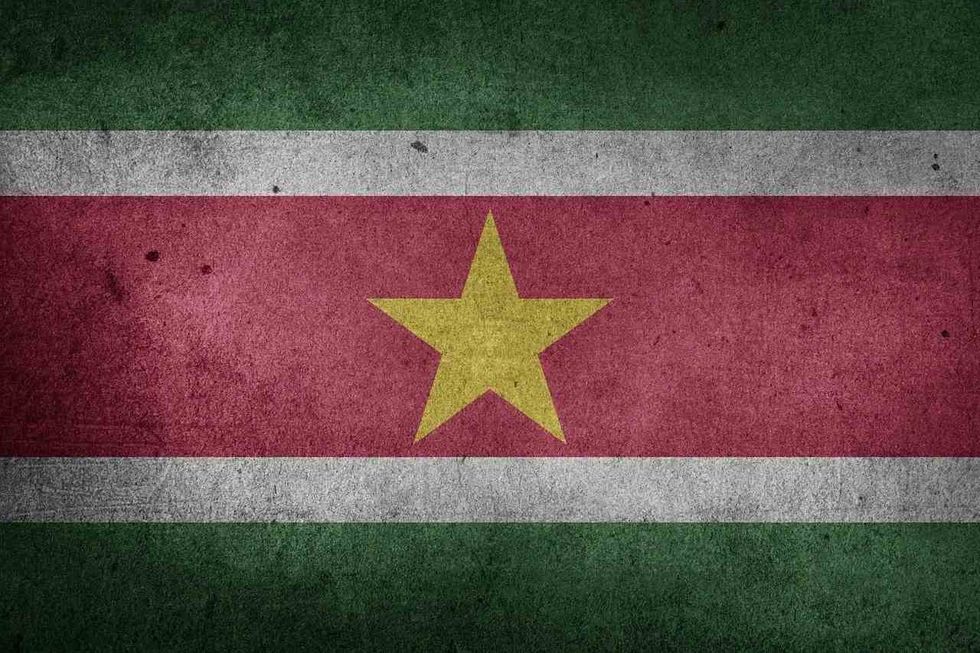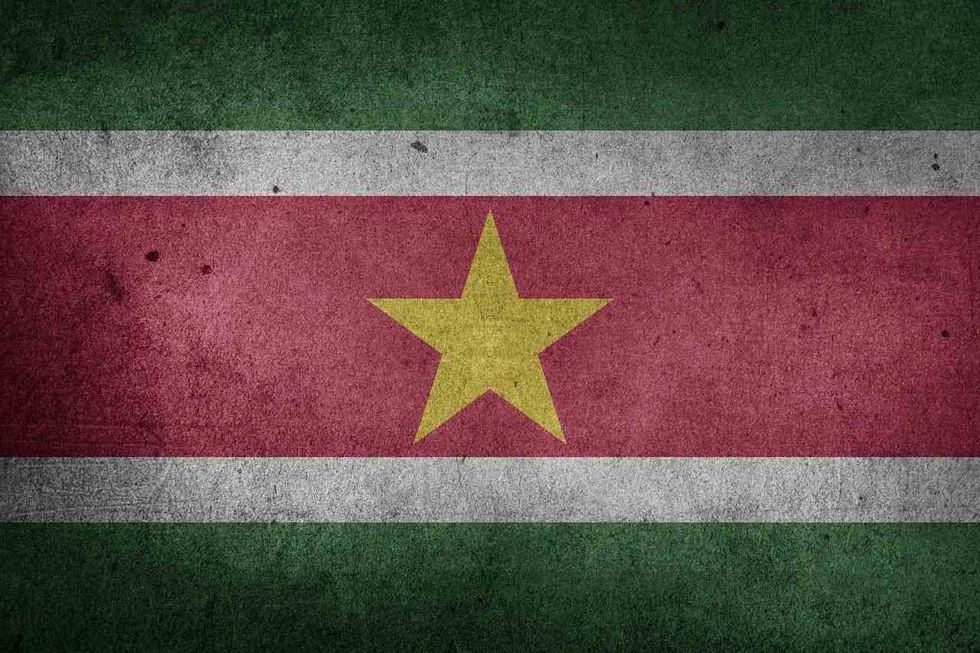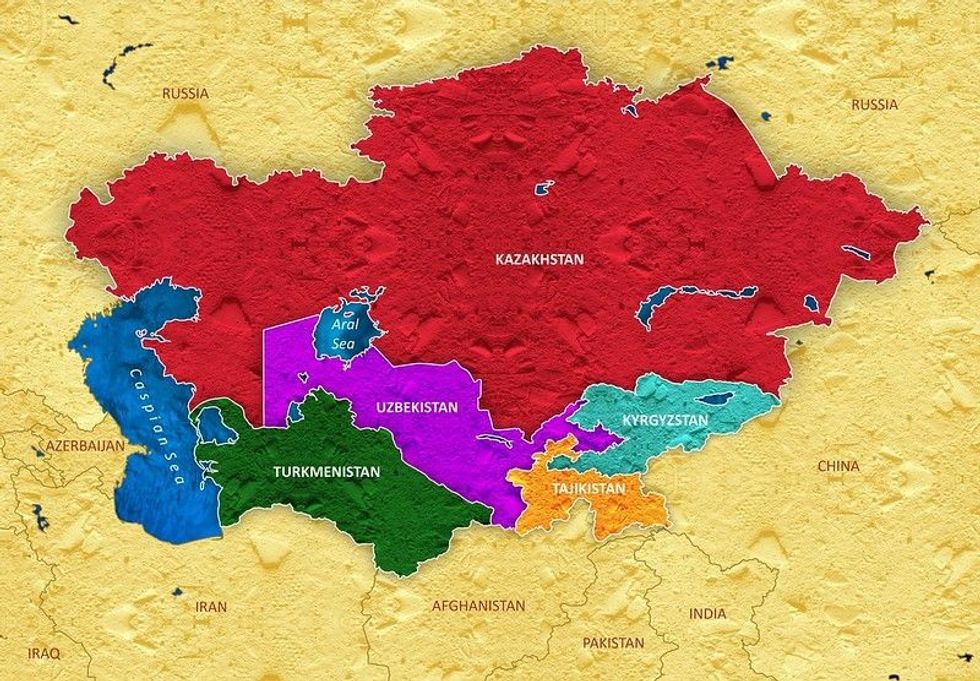The Republic of Suriname is a country in South America that is culturally rich and has great ethnic diversity along with considerable historical importance.
Suriname is the smallest country in the South American country in terms of area as well as population. While the culture, nature, and heritage of the country are extremely rich but the Surinamese people struggle financially and more than 70% of the population lives below the poverty line.
Suriname is an extremely diverse country in terms of ethnicity and religious practices. People from various religions live here peacefully and work towards the progress of the nation.
You can easily find mosques, temples, and churches in close vicinity in various regions across the country. People of Suriname like to live peacefully with each other. Here is an extremely important Suriname fact, the smallest country in South America offers an extremely important lesson to the world which is to showcase religious tolerance and co-exist peacefully.
The capital city of Suriname also happens to be a UNESCO World Heritage Site along with the Central Suriname Nature Reserve. The Capital city of Suriname, the inner city of Paramaribo was accorded the status of UNESCO World Heritage Site in the year 2002.
The reason behind the capital city being designated this coveted status is the presence of numerous ancient buildings that have considerable religious significance as well as historical importance.
Here we will learn everything about the lesser-known country of Suriname. Suriname is a country of historic importance and religious significance in Latin America.
We will have a look at its geographical location, customs and traditions, the official language, spoken there, and the official state symbols. Continue reading if you are curious to know some interesting facts about Suriname.
After reading some of the most essential aspects of the smallest independent country in South America, also check Georgia colony fun facts and Hawaii state flower facts.
Suriname Geographic Location
The country lies on the Northeastern coast of South America. Suriname borders French Guiana in the east, the North Atlantic Ocean, Brazil in the south, and Guyana in the west.
Did you know that 16% of Suriname's land area is national parks and lakes!
The name of the country 'Suriname' might have Amerindian roots. Although considered to be a Caribbean nation, Suriname is a country in South America.
The country is rich in culture as it is multi-religious, multicultural, and multilingual. Suriname is a small country and the country’s land area is 101,793 sq mi (163, 820 sq km) but the Surinamese culture is vivacious.
Most of its inhabitants are located in the coastal zone, which is narrow. Suriname has a tropical climate that alternates between rainy and dry seasons.
The national territory of this dutch colony is mainly covered by tropical rainforests. Suriname's capital city is also the historic inner city Parambiho and has been since its colonial days. The largest city of Suriname is in Brokopondo.
The architecture of Suriname is mainly Dutch. It is especially evident in the inner city of Paramaribo and even more so in the presidential suite. The South American influence is visible in the cathedral of st. Peter and Paul which is the biggest structure of wood built in the early nineteenth century.
Suriname Customs And Traditions
People belonging to various ethnic groups call the republic of Suriname their home. Suriname's population is multi-ethnic as people are of mixed ethnic descent. The largest ethnic group in this independent nation is the Hindustanis.
Hindustanis are people from the Northern part of India and account for about 27.4% of the country’s population. The rest is made up of creoles who are people of mixed European and African descent, Maroons who are the African slaves who were brought to Suriname, and the Javanese.
There are also people who are natively Amerindians and some also belong to other ethnic communities or backgrounds. Much like India, the country of Suriname is also rich in oral literature.
Almost all ethnicities have their own separate literary tradition. Mainly the legends and folktales comprise such literature. The emergence of written literary work was as late as the 18th century in the country of Suriname.
Dutch, Sranantango, and Hindi are three languages in which most of the written literary work exists. The handicraft industry of Suriname is also famous. The whole world appreciates the wood carvings, baskets, and colored textile designs that are made by the skilful handicraft artists of Suriname.
Like the population and other aspects of Suriname, the musical aspect is also diverse. Fusion music named the Kaseko music combines popular songs and folk music that belongs to different cultures.
This kind of music is known as Indo-Caribbean music. The '30s was the era in which this beautiful music developed in Suriname. This kind of music is produced by using drums, trumpets, trombones, and saxophones.
A single person or even a choir can sing such kind of music. Instruments like the tabla, harmonium, sitar, and Dholak are made use of to play Indian music.
Various festivals are celebrated with vigor as Suriname has a multi-cultural heritage. Sometimes these celebratory days also mark special days related to the ethnicities like the Day of the Indigenous People, Immigration of the Indians, the Emancipation day, and the Immigration of the Javanese.
Hindu national holidays such as Phagwa and Diwali are the Hindu national holidays observed by some Surinamese people.
In this same way, Eid ul -Fitr and Eid ul-Adha are the Islamic holidays the country celebrates. On the 31 December “Qud Jaar” is observed by the people when the country's population flocks towards the commercial district to witness the beautiful fireworks.
Suriname Official Language And Religion
Here are some of the most fascinating facts about Suriname and its official religion and language.
The official language spoken in this country in South America and used as a medium of instruction is Dutch. Besides dutch about 20 other languages are also spoken in this small country in the western hemisphere. The lingua franca and the major creole language is Sranantango.
This language came into existence at the plantations where masters and slaves used to use it to communicate. Dutch, Portuguese and African elements can be found in Sranantongo which is a creole language that is English based.
There have been attempts made to make the Sranantongo language the official language however it has always been resisted by the people who are not creole.
Sarnami-Hindustani and Surinamese-Javanese are the languages that are majorly spoken other than the Dutch language. Other main languages are the Maroon languages that are based on English. Eight Amerindian languages are also spoken in Suriname.
Suriname Official State Symbols
Suriname’s official state symbols are majorly the national anthem, the coat of arms, and the national anthem. At the country’s independence was when the flag was unveiled. There are bands of white, green, and red in the flag. Read on for some interesting facts about Suriname and its official state symbols.
The green color symbolizes fertility, white symbolizes justice and the color red symbolizes patriotism. There is also a five-pointed star in the center of the red-colored band that is the symbol of unity of the nation and a prosperous and golden future.
The five points depict the five continents and the main five groups of the population. The symbol for the national court of arms has the motto, Justitia-Pietas-Fides which means justice, love, and fidelity.
Two Amerindians have taken hold of the shield in the symbol. On the left side of the shield, there is a ship and on the right side, there is a palm tree that depicts the future.
It is a symbol of a virtuous man. The National Anthem of the country of Suriname has been composed by taking inspiration from a Dutch composition that is from the late 19th century. A text written in the Sranan Tongo language was added in the '50s.
Suriname is the smallest country in South America which is surrounded by French Guiana towards the east, the Atlantic Ocean towards the North, Guyana to the west, and Brazil towards the South. While its relations with Brazil are generally normal, there are ongoing territorial disputes with French Guiana as well as Guyana.
These territorial disputes could be attributed as a legacy of colonial rule.
These countries were under the rule of European colonial powers, French and Dutch and the bitter disputes regarding the territory still persist. The main reason for the dispute between Guyana and Suriname is the area of the New River Triangle, which is a 6000 sq mi (15,600 sq km) area lying between the two countries.
Here at Kidadl, we have carefully created lots of interesting family-friendly facts for everyone to enjoy! If you liked our suggestions for 15 Suriname fun facts: history, capital city and community explained then why not take a look at Paleolithic age inventions: learn all about the innovative inventions or learn all about the discovery of the incredible Iguanodon fossil.








